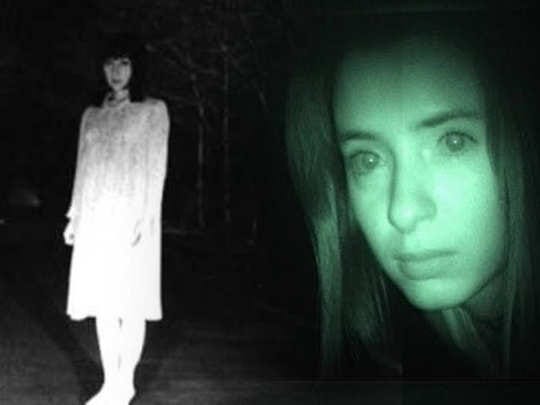In the realm of viral horror stories and internet legends, few have captivated and terrified audiences quite like the tale of Teresa Fidalgo. Her name has haunted Facebook posts, WhatsApp messages, YouTube videos, and Instagram threads for nearly two decades. Presented as a real ghost who died in a car accident and later “appeared” in videos or messages to warn people of her death, Teresa Fidalgo became one of the most widespread urban legends in the digital age.
But who — or what — is Teresa Fidalgo? Is her story rooted in real events, or is it just another well-executed internet hoax? Let’s dive into the full narrative, trace its origins, and separate fact from fiction.
The Origin of the Teresa Fidalgo Story
The story of Teresa Fidalgo first emerged in 2003, when a video titled “A Curva” (“The Curve”) started circulating online. Created by Portuguese filmmaker David Rebordão, the short horror film showed a group of young people driving down a deserted road in Portugal when they pick up a mysterious hitchhiker — a girl who later identifies herself as Teresa Fidalgo. Moments later, the girl suddenly screams and points, and the car crashes. The screen cuts to black. It was chilling, eerie, and shot in a very realistic style, mimicking real dashboard footage — just like the “found footage” horror genre popularized by films like The Blair Witch Project.
Viewers across the globe believed it to be real. Many didn’t realize they were watching a fictional, scripted short film. As the clip went viral, it became misinterpreted as authentic footage of a supernatural encounter.
The Ghostly Message Goes Viral
Following the release of the video, a chain message began circulating across various platforms, usually containing a few terrifying lines:
“I am Teresa Fidalgo. If you don’t share this message, I will sleep by your side forever.”
This message, sometimes accompanied by a still photo of the “ghost” or a screenshot from the video, appeared in countless languages and formats. Many messages warned readers that someone had ignored Teresa and “died a horrible death.” It resembled the classic email and SMS chain messages of the early 2000s, but this one had a more modern horror edge that connected deeply with younger audiences on social media.
Debunking the Myth: The Real Story Behind Teresa Fidalgo
Despite the ominous warnings and eerie photos, there is no real-life Teresa Fidalgo who died in the manner described in the legend. There are no legitimate police reports or historical accidents matching her supposed death on that road in 1983 — the year often cited in the viral texts.
Filmmaker David Rebordão himself later confirmed that the story and footage were completely fictional. “Teresa Fidalgo” was simply a character in his short horror film A Curva. But by then, the damage was done — millions had already accepted the story as truth.
Still, many people, especially young social media users, didn’t get the memo. The message continued to thrive, recycled again and again in the form of scary posts, YouTube videos, and comments under TikToks and Instagram reels.
Why Did People Believe It?
There are a few reasons why the Teresa Fidalgo legend gained such massive traction:
- Realistic Footage Style: The original video was shot in a found-footage format, creating an air of authenticity.
- Emotional Manipulation: The message threatened readers with harm if they didn’t share the story. This “fear bait” tactic is common in chain messages and scams.
- Mystery and Ambiguity: The story never gives too much detail, allowing people to project their own fears and imagination onto the tale.
- Peer Pressure and Superstition: Many younger users would rather be safe than sorry and forward the message “just in case,” further spreading the story.
- The Rise of Social Media: Platforms like Facebook, WhatsApp, and Instagram amplified the story’s reach, allowing it to transcend geographical and language barriers.
Teresa Fidalgo and the Evolution of Digital Urban Legends
The case of Teresa Fidalgo is a textbook example of how urban legends adapt and evolve in the internet age. Where ghost stories once spread around campfires or neighborhood gossip, they now travel at the speed of a tap or click. They exploit psychological triggers — fear, curiosity, the unknown — and social dynamics, such as peer sharing and viral trends.
Unlike traditional myths that take years to become popular, the Teresa Fidalgo legend achieved global reach in weeks, even days. It’s one of the earliest and most powerful examples of “viral horror” on the internet.
Real-World Consequences
Though fictional, stories like Teresa Fidalgo’s can have real psychological impacts — especially on younger, impressionable audiences. Some children and teens have reported sleepless nights, paranoia, or even anxiety after receiving the message. In certain extreme cases, these types of chain messages have been associated with cyberbullying or peer coercion.
It’s a reminder that even digital folklore, when widely believed, can have tangible effects on people’s behavior and emotions.
Lessons to Learn from the Teresa Fidalgo Legend
1. Critical Thinking is Crucial
In a world where misinformation can spread so easily, it’s important to pause and think before accepting viral content as fact. Cross-reference sources, look for credible explanations, and learn to spot red flags like scare tactics or unverifiable claims.
2. Viral Doesn’t Equal Truth
The popularity of a story or video doesn’t determine its truthfulness. Teresa Fidalgo’s tale became a massive trend despite being entirely fictional.
3. Be Kind Online
If you see others sharing scary chain messages, don’t mock them — instead, offer helpful context or links to clarify the truth. Many people fall for these stories out of fear, not ignorance.
What Happened to the Creator?
David Rebordão, the creator of the Teresa Fidalgo film, continued working in video and film production. While “A Curva” remains his most infamous project due to its unintended viral legacy, he never expected the character of Teresa to become an internet boogeywoman. The legend has long outgrown his short film, showing how unpredictable internet culture can be.
Teresa Fidalgo’s Place in Internet History
The story of Teresa Fidalgo is more than just a creepy legend — it’s a fascinating case study in how stories travel and evolve in the digital age. It teaches us about the power of video storytelling, the vulnerabilities of online communities, and the persistence of fear-driven narratives.
Though she was never real, Teresa Fidalgo will likely continue to haunt corners of the internet for years to come — not as a ghost, but as a symbol of how quickly fiction can become perceived as fact.



